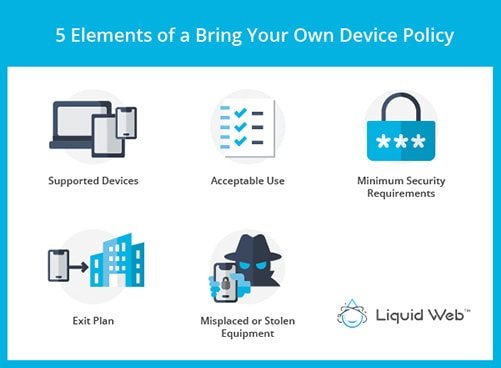A well-written BYOD policy can save your company money, increase productivity, and improve employee satisfaction. You should include five key components to create an effective BYOD policy. These components should be made clear to employees during onboarding and when their devices connect to the company Wi-Fi network.
Authentication
Authentication is essential to an effective BYOD policy because it protects company networks from malware and other security threats. It also helps ensure that only authorized employees have access to sensitive data.
An excellent way to implement authentication is through a mobile device management platform (MDM), which can help monitor employee activity and block devices that may threaten the organization’s network. It can also enable IT to update applications on employee-owned devices without requiring users to download them manually. Another issue that should be addressed is if an employee is jailbreaking their device or downloading unsanctioned applications, which can introduce security risks to the organization’s network. A well-drafted BYOD policy should prohibit these activities. Lastly, companies should have a clear plan for when employees leave the company, and their device has company data. This could include remotely wiping the device to prevent the spread of malware and other security issues. The same goes for when a device is lost or stolen.
Security
Securing business data is crucial to the classic information security triad of confidentiality, integrity, and availability. BYOD policies should be designed to address each of these components. For example, enforcing two-factor authentication can help prevent hackers from accessing employee accounts on business applications on personal devices. It requires employees to follow steps beyond a simple login, such as answering security questions or entering a verification code. A good BYOD policy should also prohibit jailbreaking devices or downloading unsanctioned applications. Mobile device management (MDM) solutions can track what applications are installed on devices and ensure that all apps are up to date, preventing potential security vulnerabilities. In addition, an effective BYOD program should offer different device login procedures based on an employee’s access level. It should also include processes around addressing device loss or theft and offboarding procedures. For instance, if an employee leaves the company and is still logging in to their work email or accessing confidential company data, it is essential to have a process to wipe the device remotely.
Access
A vital component of an effective BYOD policy is access, which enables employees to connect devices to the company network and access information and content. This can be done in several ways. For example, companies may limit devices based on brands or operating systems to ensure they are compatible with the company’s infrastructure and software applications. This approach can save the company money in device acquisition costs and can help improve employee satisfaction since they use familiar devices. It also allows IT to implement more security controls like mobile threat detection and MDM. Remembering that the classic information security triad of confidentiality, integrity, and availability still applies to BYOD devices is essential. To maintain the confidentiality and integrity of data, you should require strong passwords and multifactor authentication for BYOD users.
Moreover, you should instruct employees not to share their devices with others. Additionally, it would be best if you encouraged them to update their devices’ operating systems and install anti-malware software on them. This can help prevent the spread of malware to other devices and computers.
Training
Like all new initiatives, BYOD will increase employee support requests. It is essential to have a transparent service policy in place that addresses what employees should expect when using personal devices. This can include a device replacement process, remote data backups, and patching of applications. The service policy should also address whether employees will be reimbursed for expenses incurred. It should also include a procedure for removing company information from devices when an employee leaves your organization. BYOD policies should also list authorized and banned apps and the types of hardware and software you will allow on your network. Generally, you should only allow devices from manufacturers and operating systems that have been vetted for security features. This will help minimize the complexity of the security infrastructure on your networks, as well as improve productivity. Additionally, requiring two-factor authentication can prevent hackers from accessing user accounts by requiring secondary verification steps, such as a verification code sent to the device or via email. It will also require employees to use complex passwords to keep hackers at bay.
Compliance
Ensuring compliance is one of the most critical components of an effective BYOD policy. This includes establishing processes for verifying that security solutions are installed on devices accessing company data and creating protocols for evaluating the risk of different applications (personal and business). A robust BYOD management solution also makes monitoring and managing employee personal devices easier. Having the right tools in place ensures that any potential threat to your corporate network can be detected quickly and isolated so that action can be taken before the damage is done. Finally, remember to establish a transparent process for what happens when an employee leaves the company. A well-established exit strategy is essential to protect employees’ privacy and avoid legal complications. This could include a procedure for remotely wiping personal data from their devices before they leave the organization. Also, remember to create a backup of any business data that may be stored on employee devices. This will be helpful in the event of a loss or theft of an employee’s device.
